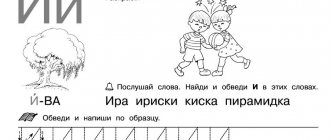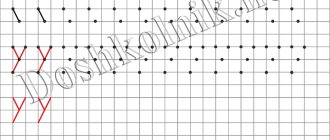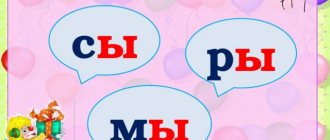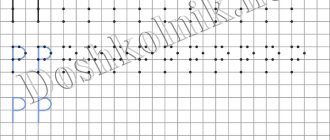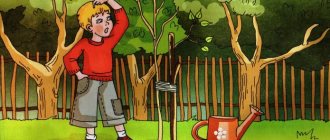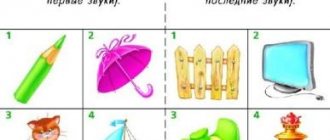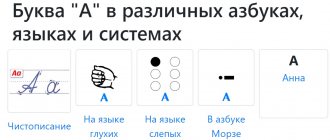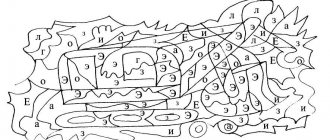Self-analysis of OOD on speech development “A fairy tale came to visit us” in the middle group
Valentina Lozovaya
Self-analysis of OOD on speech development “A fairy tale came to visit us” in the middle group
Description:
speech development in the middle group was presented . The lesson was developed in accordance with the Federal State Educational Standard and the educational preschool educational program; the content and organization of the work schedule was 20 minutes; During the lesson, there was a change in types of activities, age and individual characteristics were taken into account, as well as the level of development of the children . Preliminary work was carried out: reading fairy tales , asking and guessing riddles, learning nursery rhymes and poems. Taking all this into account, I outlined the goal, objectives, content. The purpose of the lesson: the development of creative abilities through theatrical activities. I set the following objectives: Educational:
— introduce children to works of Russian folk art in which characters are mentioned;
— to develop children’s ability to transfer the plot of a fairy tale into a game using various types of theater;
- to develop children’s ability to pronounce text clearly, using different emotional joy (coloring, sadness)
.
Developmental :
- to form the grammatical structure of speech , phonemic hearing in children; strengthen correct pronunciation skills;
- develop memory , thinking, attention, coordination and motor activity, expressiveness of speech and tempo , voice strength.
Educational:
— to form cognitive interest in literary works and works of oral folk art;
- cultivate cognitive interest in theatrical activities. All stages of the lesson were subordinated and interconnected to the given topic and goals of the lesson. Changing the type of activity at each stage of the lesson helped prevent children from getting tired. At all stages of the lesson, children’s speech, cognitive and motor activity intensified. The guys dynamically switched from verbal exercises to other tasks. The structure and content corresponds to the age capabilities of children, consists of three parts: introductory, main, final. Introductory part: -psychological mood, motivation for upcoming activities; playing at being an artist. Main part: - Magic bag - Making riddles - Dynamic pause - Exercise “Tell it to your neighbor”
Final part: - Say
“Exercise with different intonations”
- Transformation into artists. - the result of the lesson.
The following methodological techniques were used in the lesson: 1. Verbal: conversation - dialogue, questions, use of literary words. Explanations, words of encouragement, explanations.
2. Visual: looking at pictures
3. Practical: demonstration, execution.
4.Game: game situation and word games.
The methods and techniques used in the lesson made it possible to solve the assigned tasks and achieve the planned results.
Throughout the entire lesson, I used health-saving technologies: the children were in motion, doing finger exercises, physical exercises, and a theatricalization of the fairy tale “Teremok.”
. The children did not get tired and remained interested until the end of the trip. The psychological mood was carried out as an invitation to play, establishing visual and tactile contact.
The introductory and organizational part was carried out in the form of a relaxation game. The motivation for the children's future activities was formed with the help of a problematic situation that the children had to solve.
The guys worked actively, on a good emotional high. Due to their high emotionality, the children sometimes answered in chorus, and sometimes interrupted each other - this did not prevent me from seeking individual answers from the children.
In the course of performing various speech tasks and exercises, I did not always encourage the children to fully answer the questions posed.
Summing up the results of the educational activities was carried out in the form of a general conversation. Result: the children were active, interested, everyone was included in the game, the assigned tasks were completed, the goal was achieved
Self-analysis of a speech development lesson in grade 1a
Self-analysis of a speech development lesson in grade 1a
Teacher:
I gave a lesson in speech development in grade 1a according to the program “Special (correctional) educational institutions of type II” (2nd department, option II)
Lesson type – combined.
Solving the educational tasks of the lesson meets the requirements of the speech development program for 1st (hard of hearing) grade.
Tasks:
Educational:
- expand knowledge about the family; develop the ability to compose sentences using reference words; development of students' oral and written speech by enriching students' vocabulary; develop the ability to test your knowledge and objectively evaluate the results of your work; practice and improve the studied material.
- practice and improve the studied material.
Educational:
- correct visual perception based on exercises in recognition and discrimination; develop verbal memory based on exercises in memorization and reproduction; the ability to improve mental actions: analysis, comparison, generalization; work on the development of students' residual hearing.
Educational:
- increase interest in the subject; creating conditions for active cognitive activity of students; cultivate discipline, composure, independence, perseverance.
Teaching methods: reproductive, problem-based, programmed.
Forms of organization of cognitive activity: frontal,
individual, group.
Learning tools: Mimio Studio presentation, didactic material.
In accordance with the type of lesson, the following lesson structure was provided:
1. Organizational stage.
Purpose: preparing students for work in the classroom.
2. Preparing students to perceive the topic.
Purpose: to organize the cognitive activity of students, to communicate the topic,
objectives of the lesson, to attract attention and arouse interest in
studying this topic.
3.Main stage of the lesson
Goal: to continue working on the content of the material being studied.
- Game for attention Game "Settled in the house." Making sentences based on pictures.
4. Summing up the lesson. Reflection of activity.
Purpose: to draw a conclusion and summarize.
During the lesson, methods were used based on the type of information source:
- verbal (dialogue in preparation for active cognitive activity, at the stage of updating knowledge, conversation based on a picture) visual (throughout the entire lesson, the work was accompanied by a presentation) practical (students completed tasks on the card)
By type of educational activity:
used the problem method (students underlined the words from which they chose the ones they needed). I used pair work for collaboration that helps develop a person's self-confidence. It helps children quickly find their way around.
Forms of cognitive activity: general class.
Visual, technical, and didactic teaching aids are used in the lesson. All these methods, forms and means helped to achieve the goals set in the lesson.
During the lesson I used the following forms of work: frontal, independent, individual.
Complied with the principle of accessibility of the proposed educational information. All tasks turned out to be feasible for the students.
Didactic side of the lesson
- The material is easy to understand. The stages of the lesson are interconnected and sequential. Students understood the questions and found answers to them. A visual method was used.
The content of the educational material and the types of work used in the lesson were aimed at maintaining the cognitive activity of students throughout the lesson.
Requirements for a modern lesson include the use of information technology. Therefore, a computer presentation was created.
Taking into account the psychological and age characteristics of students of this age, the main stage of the lesson included health - saving technologies: physical education.
From an educational point of view, the lesson contributed to the development in children of respect and love for their loved ones.
The lesson has achieved its objectives.
The structure of the lesson fully complies with the logic of the stated type of lesson, since my organizational task was to create conditions for further perception and consolidation of material on this topic. In my opinion, such conditions were created during the lesson.
When organizing and conducting the lesson, I tried to create a situation of psychological comfort for the children, when each student is successful in his opinion, he is not afraid to speak out.
The use of an element of dialogue leads students to social adaptation and increases their level of sociability. That is, the method of creative well-being and the method of creative self-expression, used in the lesson, allow you to develop the skills of voluntary behavior, a sense of a partner, imagination, and observation. These methods lead to the effective emancipation of one’s own individuality, the manifestation of creative activity and independence.
The students in the lesson were active, attentive, and efficient. I believe that the chosen form of organizing the educational activities of schoolchildren was quite effective. On my part, the norms of pedagogical ethics and tact, and the culture of “teacher-student” communication were observed.
Throughout the lesson, I monitored the children’s speech, corrected mistakes in the pronunciation of endings, and paid attention to accents.
The results of the lesson indicate that during the lesson the students repeated previously acquired knowledge and drew conclusions for themselves. At the final stage of the lesson, the children assessed their work; self-esteem is one of the conditions for the development of a full-fledged personality. Students were given differentiated homework.
Get text
Self-analysis of the lesson “Speech development and culture of verbal communication”
Irina Evmenchik
Self-analysis of the lesson “Speech development and culture of verbal communication”
Teacher of the second category:
Evmenchik Irina Alekseevna
At a lesson in the educational field “ Speech development and culture of verbal communication ”
The following program tasks were solved with middle group students:
Software tasks:
Educational:
— clarify and expand the idea of winter and its signs;
- clarify and activate the vocabulary on the topic, learn to answer questions, select words-signs, words-actions, words that are opposite in meaning.
Developmental:
- develop visual attention and perception, speech hearing and phonemic perception, coherent speech, motor skills of the fingers, coordination of speech with movements .
Educational:
— fostering a culture of verbal communication .
___ children were present at the lesson The children are active, friendly, attentive. A positive psychological attitude was created at the beginning of the lesson .
According to the type: an activity to consolidate previously acquired concepts, skills, and abilities. Content is provided to help solve program problems. The objectives of the lesson corresponded to the program and age requirements.
The form of the lesson was chosen to be non-traditional - a travel lesson , which made it possible to arouse students’ interest in the lesson , increase their motivation, and set them up for the upcoming activity. The lesson follows a storyline, where the teacher and students act as travelers.
The content of the educational material was differentiated, logically structured, the tasks were composed with subsequent complication (from simple to complex: in the first task, according to the instructions, it was necessary to perform one action (select the desired mitten by color and pattern, in the second - two actions - guess whose footprint and talk about preparing an animal for winter, in the third - choose the right baby animal and name it, in the fourth - choose words with opposite meanings and make a sentence with them. A quick change of activities made it possible to concentrate the children's attention on the proposed tasks and complete the assigned tasks.
The following methods were used in : gaming, verbal, visual and practical methods. To activate speech , conversations, questions to children, and verbal encouragement were used); visually - demonstration (video fragment, audio recording, didactic games)
.
Thus, the entire lesson is based on completing game tasks. The result is that the children showed interest in the content of the didactic tasks that were solved in the lesson .
The parts of the lesson were interconnected , consistent, and logically arranged.
During the lesson I tried to pay attention to all the children. I used didactic material made by myself. Application helped me create a positive emotional background and motivation for active speech activity in children . Its placement in the learning space was rational, thoughtful and contributed to optimal load distribution throughout the lesson .
The fulfillment of the tasks I set was also helped by leading questions that pushed the children to make independent statements . Questions and tasks were selected so that all children could participate equally in the work. I tried to arouse children’s interest in the activity, diversify the material and tasks, and create a friendly atmosphere during the lesson . The questions were clearly formulated, simple and understandable to the children, and corresponded to the level of children’s speech development and the objectives of the lesson . I believe that the tasks set during the lesson were solved .
In the future, it is necessary to pay attention to the ability to clearly and quickly give tasks, and learn to receive feedback from each child.
